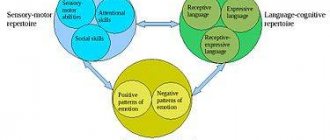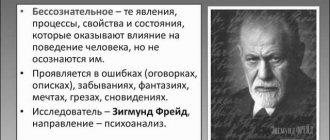Behaviorism has long been considered the pinnacle of psychological science, allowing a different look at the study of mental processes and gaining a foothold in such areas as politics, sociology and pedagogy. Many psychologists consider behavioral methods to be harsh and depersonalizing.
What is behaviorism?
Behaviorism is (from the English behavior - behavior) - one of the major trends in psychology of the 20th century. exploring the human psyche through behavioral patterns, consciousness is denied. The prerequisites for the emergence of behaviorism were the philosophical concepts of John Locke, that a born person is a “blank slate,” and the mechanistic materialism of Thomas Hobbes, who denies man as a thinking substance. All human mental activity in behaviorism is initially reduced to the formula: S→R, then an intermediate parameter is added: S→P→R.
Founder of behaviorism
The founder of behaviorism, John Watson, proposed to bring the processes occurring in the human psyche to a tangible level, measured using instruments and tests, and thus the famous formula was born: behavior is S→R (stimulus→response). Based on the experience of I. Pavlov and M. Sechenov, with the proper approach to research, Watson predicted that it would be possible to completely predict and forecast behavior and consolidate new habits in people.
Other followers and representatives of behaviorism in psychology:
- E. Tolman - identified 3 determinants of behavior (independent variable stimuli, body abilities, interfering internal variable intentions).
- K. Hull - introduced an intermediate link into the organism (internal invisible processes) by stimulus and reaction;
- B. Skinner - identifies a special type of behavior - operant, the formula takes the form S→P→R, where P is reinforcement leading to a useful result that is fixed in behavior.
Basic principles of behaviorism
Over several decades of research into animal and human behavior, several behavioristic principles have emerged. Behaviorism – basic ideas:
- behavior is a reflection of mental processes outside;
- the main goal of behavior is adaptation to external conditions;
- behavior is a really measurable substance that can be measured and verified;
- reward and punishment condition behavior;
- behavior is objective and observable, while consciousness and will are not;
- personality – a set of behavioral stimulus→reactions;
- the individual's reaction depends on past experience;
- behavior is determined by the external environment.
Links[edit]
- Baer, Michael A. (1991). Jewell, Malcolm E.; Lee Siegelman (ed.). Political Science in America: Oral Histories of the Discipline
. Lexington: University of Kentucky Press. ISBN 0-8131-0805-5. - Beeler, Roger; Drengson, Alan R. (1978). Philosophy of Society
. Rutledge. ISBN 0-416-83490-6. - Berndson, Erkki. "Behavioralism: Origins of the Concept". Archived from the original on 2009-05-14.
- Dahl, Robert A. (December 1961). "The Behavioral Approach to Political Science: An Epitaph for a Monument to Successful Protest." American Political Science Review
.
55
(4):763–772. DOI: 10.2307/1952525. JSTOR 19525 25 . - Easton, David (1953). Politic system. A Study of the State of Political Science. New York: Alfred A. Knopf.
- Easton, David (1962). "Introduction: Contemporary Meaning of Behavioral Behavior." In Charlesworth, James (ed.). Political Science
. Philadelphia: American Academy of Political and Social Science. - Engeman, Thomas S. (1995). "Behaviouralism, post-behaviouralism and the revival of political philosophy". Perspectives on Political Science
.
24
(4): 214. DOI: 10.1080/10457097.1995.9941880. - Yulau, Heinz (1969). Behavioralism in Political Science
. Deal. - Gilman, Niels (2007). Mandarins of the Future: A Theory of Modernization in Cold War America
. JHU Press. ISBN 0-8018-8633-3. - Grigsby, Ellen (2011). Analyzing Politics: An Introduction to Political Science
. Cengage Learning. - Guy, James John (2001-08-01). People, Politics and Government: A Canadian Perspective. Pearson Education Canada. ISBN 0-13-027246-9.
- Hanson, John D.; Douglas A. Kisar (June 1999). "Taking Behavior Seriously: The Problem of Market Manipulation" (PDF). New York University Law Review
.
74
(630): 75–83. ISBN 0-8131-0805-5. Archived from the original (pdf) on March 24, 2003. - Kegley, Charles W. (2008). World Politics: Trends and Transformations
(12th ed.). Cengage Learning. ISBN 0-495-50019-4. - Petro, Nikolai (1995). Reviving Russian Democracy: Interpreting Political Culture. Harvard University Press. ISBN 0-674-75001-2.
- Riemer, Neil (1997). The New World of Politics: An Introduction to Political Science
. Rowman and Littlefield. ISBN 0-939693-41-0. - Somit, Albert; Joseph Tanenhaus (1967). The Development of American Political Science: From Burgess to Behavioralism
. Irvington Publishers. - Waldo, Dwight (1975). "Political science: traditions, discipline, profession, science, entrepreneurship." In Greenstein, Fred; Polsby, Nelson (ed.). Handbook of Political Science. Reading, MA: Addison-Wesley.
- Walton, Haynes (1985). Invisible Politics. SUNY Click. ISBN 0-87395-966-3.
Behavioral theory
The emergence of behaviorism did not happen out of nowhere; concepts such as “awareness” and “experience” lost their value and could not give scientists anything from a practical point of view - it could not be touched and measured empirically. The essence of behaviorism is that a person is his behavior in response to a stimulus, which appealed to scientists, because these are specific actions that can be studied. The experiments conducted by the Russian physiologist I. Pavlov on animals, in a slightly modified form, migrated to behaviorist laboratories.
Behaviorism in psychology
Behaviorism is a direction in psychology that places human behavioral reactions at the forefront and denies consciousness as an independent mental phenomenon. Several decades until the middle of the 20th century. Psychology as a science studied a person through a set of behavioral acts: stimuli and reactions, which made it possible to shed light on many things, but did not bring us closer to the phenomena of conscious and unconscious processes. Behaviorism was replaced by cognitive psychology.
Behaviorism in political science
Political behaviorism is a methodological orientation that represents the analysis of phenomena extolled by politics, carried out through observation of the behavior of individuals or groups. Behaviorism introduced important accents into politics:
- taking into account the psychological aspect of politics, which was not even taken into account before;
- application of quantitative research methods to assess the impact of political actions: elections, implementation of bills (content analysis, mathematical systematization and processing).
Behaviorism in sociology
Social research and experiments are inextricably linked with psychological science, and are impossible without studying human nature and the processes occurring in the psyche. Social behaviorism stems from the basic postulates of B.F. behaviorism. Skinner, but instead of the usual “stimulus→response”, there is a “field” theory, which includes the following provisions:
- each person has individual characteristics and reactions to stimuli from the outside world;
- past events influence an individual's behavioral skills in a given situation.
Behaviorism in pedagogy
Classical behaviorism found its followers in pedagogy. For a long time, schooling was based on the principles of “reward” and “punishment.” The assessment method is an example of a behavioral approach, the goal of which is that a high score should reinforce the desire for further learning, and a low one should serve as a “reproach” or punishment, as a result of which the student, faced with the unpleasant consequences of a negligent attitude to learning, should want to improve. Behavioral pedagogy has been severely criticized by humanists.
Behaviorism in management
The methods of behaviorism laid the foundation for the formation of the school of behavioral sciences in management. Managers of production and companies were imbued with the ideas of behaviorism, and for themselves they saw the use of the tools of this concept for effective interpersonal interaction and, as a result, the efficiency of production processes at all levels. The development of behaviorist ideas was made possible by two theories developed in the 1950s by social psychologist Douglas McGregor:
- Theory
X. The classical concept is considered inhumane by modern experts (“hard management”), but still exists today. Most employees are lazy, lack a sense of responsibility, but value stability and security, and therefore need the control of authoritarian leadership. This management system is based on maintaining people's fear of losing their jobs. Penalties are common. - Theory
Y. A modern, progressive concept based on the best manifestations of human qualities, for this purpose a friendly atmosphere is created in the production, interesting tasks are set and all employees are involved to show that the company is developing thanks to their motivation, resourcefulness and the desire for constant self-development. Leadership style is democratic. Employees like to grow with the company.
Behaviorism in economics
Traditional economics, based on the classical principles of ethics and morality, sees a person as a logically thinking, rational being, free to make his choice based on immediate needs. Today, there are several branches of economics, one of which is behavioral economics, which has adopted all the advantages of behaviorism. Proponents of “behavioral economics” tend to believe. That consumers are prone to irrational behavior, and this is the norm for humans.
Followers of behavioral economics have developed a number of methods to create and increase consumer demand:
- Negative baits
. A product that sits on the shelves and is not in demand due to its high cost, companies throw an even more expensive option onto the market, and the product that looks cheaper compared to the new one begins to be bought up. - Free offers
are a popular method among marketers of industries and companies. For example, a person is offered two tours at a similar price, but one includes free breakfast, the other does not. The bait of a free breakfast will work - a person likes to think that he is getting something for nothing.
Notes[edit]
- ↑
Guy, p. 58 says: “Behaviouralism emphasizes a systematic understanding of all identifiable manifestations of political behavior. But it also means applying rigorous scientific and statistical methods to standardize testing and attempting to explore the value-free world of politics... the role of political science is first and foremost to collect and analyze facts as rigorously and objectively as possible." - Petro, p. 6 says, “Behaviourists generally believed that politics should be studied in the same way as the hard sciences.”
- ↑
Guy page 58 says: "The term behavioralism was recognized as part of a larger scientific movement occurring simultaneously throughout
the
social sciences, now called the behavioral sciences." - Walton, pp. 1-2.
- Devos, Carl (2020). Een plattegrond van de macht: inleiding tot politiek en politieke wetenschappen
. Ghent: Academia Press. paragraph 61. ISBN 9789401469296. - Eulau, from 1-3
- Grigsby, page 15
- Dahl, p. 763
- ↑
Guy, p. 57 says: “Based on a philosophical approach, traditionalists prescribe normative solutions to political problems. In their view, no political study of social problems can remain neutral or completely free from normative judgments or prescriptions.” - ↑
Guy, p.58. - Skittles, page 48
- Jump up ↑
Institute, Kellogg (October 2006).
"The Past and Present of Comparative Politics" (PDF). kellogg.nd.edu
. Retrieved September 8, 2021. - ↑
Peter, page 7 - Grigsby, r 15
- ↑
Easton (1953), p. 151 - ^ a b Berndtson. "Behavioralism: Origins of the Concept". Archived from the original on May 14, 2009. Retrieved April 20, 2009.
- David Easton in Baer et al. ed., 1991, p. 207
- ↑
Waldo, page 58 - ↑
Easton (1962), p. 9 - “Introduction to Political Science. Exam 2 Study Guide". Archived from the original on 2005-03-08. Retrieved January 18, 2008.
- Riemer, page 50
- ^ ab Riemer, page 101
- ^ abc Beeler, page 91
- Somit, pp. 176-180
- ^ ab Riemer, page 51
- Jump up
↑ Gilman, p 116 - "Cry, Bernard" in John Ramsden, The Oxford Companion to Twentieth-Century British Politics
(2002), p. 174
Pros and cons of behaviorism
Any doctrine or system, no matter how harmonious they may seem, has its limitations in application, and over time, all the advantages and disadvantages of behaviorism became visible, where it would be appropriate to use the methods of this direction, and where it is better to use more modern methods. In any case, practitioners should not give up this wonderful tool in their practice and use the methods of behaviorism where it can give the best effect. Pros of behaviorism:
- everything that can be learned, studied and applied in behavior - behaviorism has fully and clearly demonstrated;
- direction, combined with a scientific theoretical approach, supported by vast practical experience, made it possible to expand psychology as a science;
- Behaviorism established the patterns of formation of behavioral skills.
Minuses:
- ignoring the participation of human consciousness, all behavioral skills are reduced to the mechanistic nature of reactions;
- motivation, will, the formation of a mental image of action, and self-reflection are also not taken into account by behaviorists;
- a person under experimental conditions is considered as an animal, with a set of instincts for survival;
- Behaviorism does not explain human desire for new inventions and creativity.
Origins[edit]
From 1942 to the 1970s, behaviorism gained support. It was probably Dwight Waldo who coined the term for the first time in a book called "Political Science in the United States" which was released in 1956. [5] It was Easton however who popularized the term. It was the site of debate between traditionalists and new emerging approaches to political science. [6] The origins of behavioralism are often associated with the work of University of Chicago professor Charles Merriam, who in the 1920s and 1930s emphasized the importance of studying the political behavior of individuals and groups, and not just looking at how they comply with legal or formal rules. . [7]










